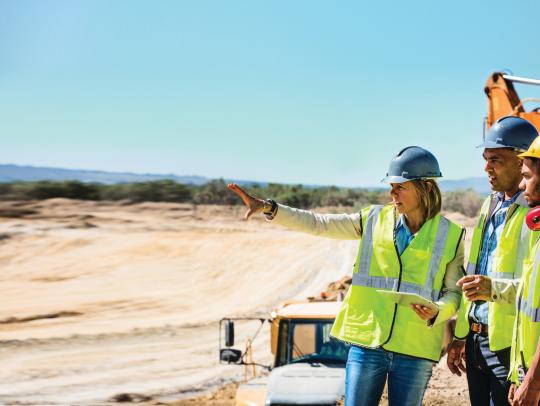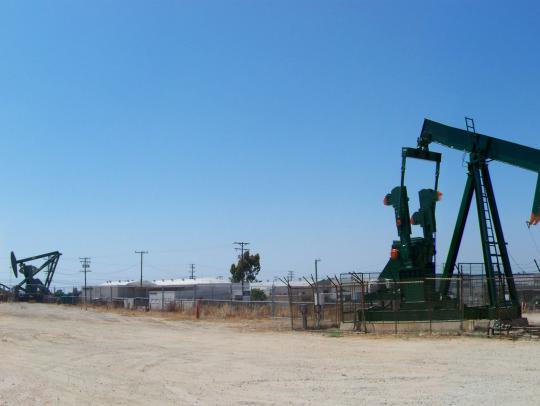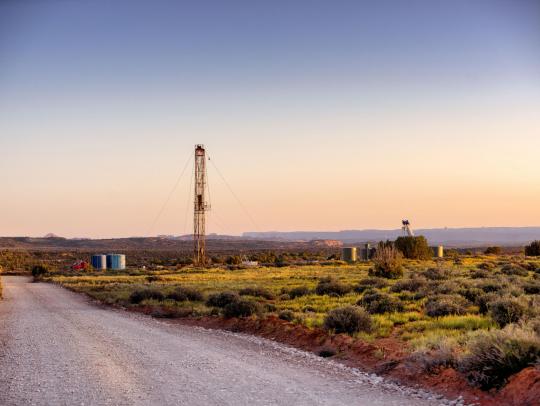SES Playing a Critical Role in Energy Boom Across North America
SES Playing a Critical Role in Energy Boom Across North America and beyond
We sat down with David Sikorski, who is focused on the North American oil and gas industry for global satellite operator SES. He shares his thoughts and insight into the trends and business drivers that have pushed demand for satellite bandwidth to new highs.
Q. Can you give a brief idea of what SES is currently doing in the oil and gas market in North America?
A. SES is providing satellite capacity and expertise to the leading infrastructure integrators serving the top oil and gas companies across North America and around the world. Our satellite fleet is perfectly positioned to enable seamless connectivity throughout this region – everything from high-speed broadband and Internet access to high-powered data and voice services are delivered over our spacecraft. That allows crews aboard oil and gas drilling rigs to communicate with colleagues at headquarters or friends and family back home from the middle of the Gulf of Mexico or some of the most remote inland locations on earth. People want their laptops, mobile phones, and their social media services to work no matter where they are, even aboard exploration vessels at sea, and oil production facilities in the middle of nowhere. We’re working with companies like Rignet, ITC Global, Harris Caprock, GDS and SageNet/Spacenet to turn that vision of a connected drilling rig or oil pipeline into reality in some of the most isolated and challenging locations anywhere. It’s rewarding work that is really driving efficiencies and streamlining operations across the oil and gas industry.
Q. Are your oil and gas customers’ requirements changing and in what way are they changing and how is SES meeting those requirements?
A. The energy boom is raging across North America – from the Gulf of Mexico and Texas to North Dakota and beyond, and it’s very exciting to see SES satellites playing an increasingly critical role during this historic time in the region. New shale operations, for example, are growing rapidly and these shale energy production firms need to connect their remote teams and facilities to headquarters like never before as part of a huge push for mobility capabilities. Whether a crew needs to connect to the corporate network or they simply want to Skype with the family back home, satellite is making it happen. SES has been supporting the oil and gas market for decades with reliable connectivity and coverage, and the demand for satellite capacity is at an all-time high, as oil and gas production in the U.S. is now ranked third in the world. Younger drilling crews want to be connected like never before, and SES’ people and satellites are integrally involved in the design of satellite coverage footprints and high-powered payloads tailored to the needs of oil and gas and maritime markets.
Q. What trends are you seeing in the oil and gas communications market and how is SES positioned to deliver on the opportunities in the sector?
A. Mobility is driving the need for and the development of a new generation of applications aimed at enabling the oil and gas industry, with mobile devices at its fingertips, to monitor and manage oil and gas operations from anywhere in the world. This has changed everything. No longer are crews tethered to big machines to monitor the pressure and flow through an oil pipeline crisscrossing the country. Now they can manage the vital signs of a pipeline network or a drilling operation in the middle of Alaska, North Dakota or the ocean with SES’ satellite spot and broad beam technologies built into our fleet of 50-plus satellites. Mobility beams like those aboard the SES-6 satellite also enable exploration vessels at sea to remain seamlessly connected – even as they venture from one region into another. As the oil and gas markets demand more sophisticated communications capabilities, and this is happening around the world today, SES is very well positioned to deliver on these demands with high-throughput satellites and high-powered coverage designed to enable communications on the go.
Q. Can you cite an example of an innovative solution you and your integration partners have provided to a customer in the oil and gas space?
A. SES works some of the most innovative companies in the world that are devoting their ingenuity and tireless focus to enabling the energy market to succeed and grow across North America and the globe. SES has played an integral part in the development of mobile maritime antenna solutions that enable ships to remain connected even as they move from one region to another at sea. That is vitally important for teams aboard exploration vessels, as they send critical data back to headquarters during their search for oil and gas reserves at the bottom of the ocean. Companies that provide all the comforts of the office and home aboard rigs in the oil patch are increasingly relying on the ubiquitous nature of satellite and the innovative mix of high-powered beams and broad coverage capabilities that SES offers across its regional and international fleet. Companies like Stallion Oilfield are constantly setting up oil and gas exploration camps and drilling operations across North America, and they rely on the support of GDS and SES to have their communications links ready on the fly no matter where they go.
Q. Anything else you would like to add?
A. Only that it’s one of the most exciting times in history to be working in the energy market, and SES is right in the middle of it all with our partners – enabling oil and gas companies to connect from anywhere as if they were at company headquarters. We’ve come a long way with mobility innovations, and satellite and SES are helping our customers turn the market’s ambitions into reality. Stay tuned, as the oil and gas industry becomes more and more connected.



